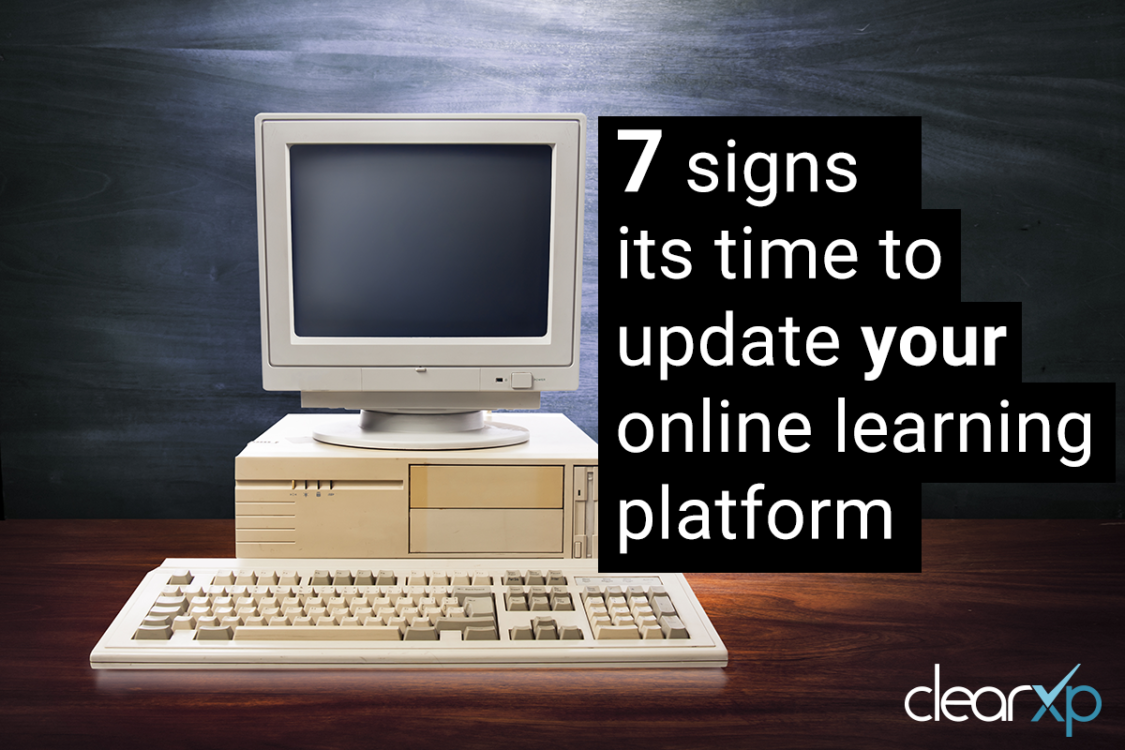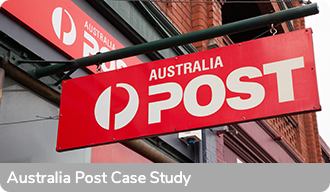7 signs it’s time to update your online learning platform
June 30, 2020
Ever get the feeling that there might be something better out there? Maybe you wanted to update some content yourself when everyone started working remotely, but your LMS wouldn’t let you do that. Or your new virtual workshops aren’t automatically tracked because the systems can’t integrate. Perhaps your systems need more plug-ins to work than actual functionality. Knowing when it’s time to change up your learning technology can be a daunting prospect, but it doesn’t have to be that way. Read on for 7 signs that your learning technology is in need of an update and what you can do about it.
It is difficult and time consuming to use and impossible to make updates
Many platforms have their quirks, and no one is perfect, but it is reasonable to expect that as a professional person with average intelligence you could effectively use a software system. User interface design has come so far, and many platforms are incredibly intuitive, if your system is too confusing and time consuming, there is a better way out there.
A common vendor arrangement is the support model. This makes sense when requirements are advanced and may involve assistance with designing eLearning content or campaigns. Unfortunately, it is often a cost for simple things like updating text, changing images and many other basic functions that an organisation should be able to complete themselves under their existing agreements.
If your system does not allow you to make easy and quick changes without having to incur a support cost, then you should consider your options. Additionally, good platforms these days have authoring capabilities ingrained into their core system and are included as part of their offering. This is the way of the future where only one platform is needed to create and manage content.
Your learning eco-system has gotten out of control
A learning eco-system can consist of many different elements. Most have an LMS, then come the extra elements that have been acquired organically over time. At various stages you may have needed a certain feature or seen an appealing technology that you couldn’t live without and added it (probably annoying your IT department in the process).
This is fine up until the point where changes occur in the business or time passes and updates need to be made. You may even find elements are no longer supported. Having as much as possible on the one platform is now possible and far more desirable.
Costs can also really add up having different technologies performing a range of learning related functions. Streamlining your eco-system, retiring extra platforms and synching all your data can make your life much easier and save you money.
More hacks than functions or integrations
Do any of these terms sound familiar? Hot fix, handshake, manual process, work around, add-on, plug-in. Today’s technologies should be able to work seamlessly with other platforms and have enough flexibility to cater for needs of customers. This does come with caveats but look for platforms that are open to integrations.
You will often find that those who resist or make it too difficult to effectively integrate have old infrastructure that is very difficult to align with modern technology. Similarly, modern learning technologies should have a robust and transparent feature roadmap and accept input and feature requests from clients. Making reasonable feature requests too costly or not possible is another sign that fundamentally the system is too old or isn’t built on a solid technology stack.
Sales pitch sounded good but that’s about it
It’s so exciting when you get something new and shiny. You browsed online for hours, poured over videos and images, read reviews and even had the chance to talk about it with a friendly chat-bot or smooth-talking salesperson. Then all the excitement is drained as once you get started and you realise that it really only is capable of fulfilling half of what you were hoping for.
To get deals across the line there will be promises made, features talked up and, let’s be frank, a lot of lies. This is an unfortunate reality, but it does not mean you should put up with technology that is simply not up to the task.
If your supplier is not able to deliver on promises they had made or are unwilling to provide you with what you need then it is time to assess your options. A good supplier will be able to show you case studies and offer the chance to speak with current clients so you can be sure you’ll get what you wanted.
Poor learner engagement
Building great learning content takes skill, creativity and time. The last thing you want after expending all of that effort and money is to have your audience not complete, or worse not even start, the learning you have prepared for them.
Accepting that your learners do not have a lot of time available to them and probably don’t want to spend the time they do have doing your learning is important is preparing a content delivery strategy. Every audience is different, and every training course has different objectives. Just serving up content and expecting your audience to engage and complete is destined to fall flat.
Your platform should have the ability to deliver learning in a variety of ways – from structured to flexible, time delayed, just in time, micro, social or any other approach that suits your people best.
If your platform is restrictive and present too few options for engagement, time to move on.
Reporting is unable to provide any useful insights
Despite it being a terrible year, this is 2020. There is so much technology available, you really don’t need to be relying solely on Complete or Incomplete as reporting options. SCORM has been a staple for LMS for many platforms but XAPI has come along and provides standardised learning data that can be used in ways that was only possible before by hacking or using third-party providers.
XAPI can be used to dive deeper than ever before into what your learners are experiencing, what is/isn’t working, how long they spend, what trends are forming and even used to correlate how their training is impacting their performance. If you are still going by your exported spreadsheet of completions and are wondering why it seems no one is really learning anything, it is time to upgrade your capabilities.
No longer supported – legacy issues raising their head
This may seem like an obvious one but it is amazing how many organisations are trying to maintain platforms that are no longer supported or have limited support. No support means no updates. This can wreak havoc when things like browser updates occur or when things like Adobe Flash become unusable.
The thing that prevents many from taking that leap is the impression that it will be too risky or costly to move all their legacy data and records off their existing platforms. Today’s learning platforms should be advanced enough to deal with all kinds of data to make migration a straightforward exercise.
Do any of these sound like something you have experienced? If you are answering yes more often than you are comfortable with then let’s have a chat about your options.
Getting started is easy, just contact me at Andrew.bloye@clearxp.com and we can discuss an obligation free review of your systems.

